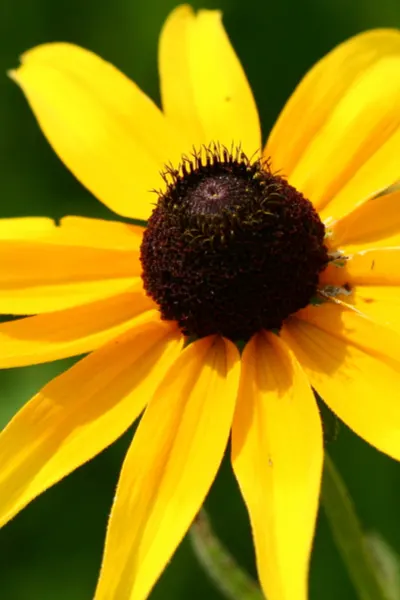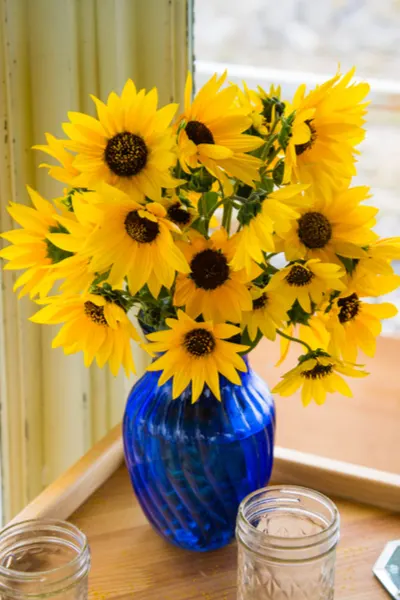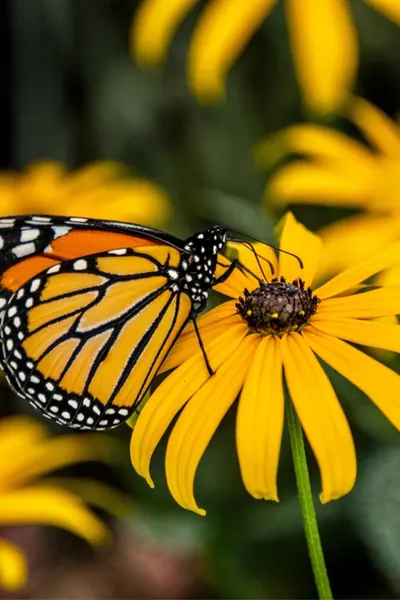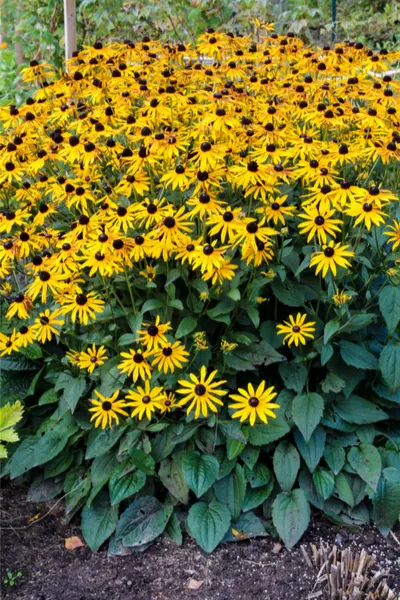If you are looking for a drought and deer resistant perennial with late season blooming power, growing Black Eyed Susan is the perfect solution.
Not only will it add lasting color and beauty to your landscape, it’s also extremely low-maintenance. In fact, Black-Eyed Susan is one the easiest perennials around to grow and maintain!

And best of all, not only are they attractive in the landscape, they make for a great cut flower. When cut, their stems and blooms can last for a week or longer indoors.
The Beauty of Black Eyed Susan
A relative of the sunflower, Black Eyed Susan is highly tolerant of both heat and drought. Their yellow petals spread out from a dark center seed core and mimic a miniature sunflower head.
Black Eyed Susan attracts birds, butterflies and other beneficial insects into the landscape. Both the nectar and the seeds serve as a valuable food source for pollinators and birds alike.

But it also stands up well to attacks from common pests and animals. The hairy stems and foliage are excellent for protecting from deer, racoon and rabbits too. In fact, when planted, Black Eyed Susan helps protect other plants in close proximity too.
Planting And Growing Black Eyed Susan
Black Eyed Susan stands up incredibly well to locations that receive full sun. Although they can be grown from seed, it is far easier to establish in the landscape with transplants. (Product Link : Black Eyed Susan Plants)
When planting, amend the soil with a bit of compost. Black Eyed Susan can thrive and grow in poor soil conditions, but will flower more profusely when given better soil – and the compost helps add both nutrients and with soil drainage.

Plants grow 24 to 36″ high, and produce flowers from June to August. With this in mind, they are perfect for planting in the mid level to back areas of flowerbeds to provide height over ground cover or lower front edging plants.
Water transplants well at the time of planting, but once established, they rarely if ever need to be watered. Black Eyed Susan’s can spread both by seed or division – and you will usually find additional starts throughout your beds from birds spreading the seed.

You can divide in the fall when plants finish flowering and begin to die back. They transplant easily, making them great for filling around the yard.
To transplant, simply cut the plant back, dig up, and split into smaller sections. Water transplants a few times through the fall to help establish new roots.
Here is to adding lasting color and beauty to your flowerbeds by growing Black Eyed Susan. For more great perennial choices, check out our Perennial Plants section on the website.
This Is My Garden is a website dedicated to spreading the love and knowledge of gardening around the world. We publish two new garden articles each week. This article may contain affiliate links.

